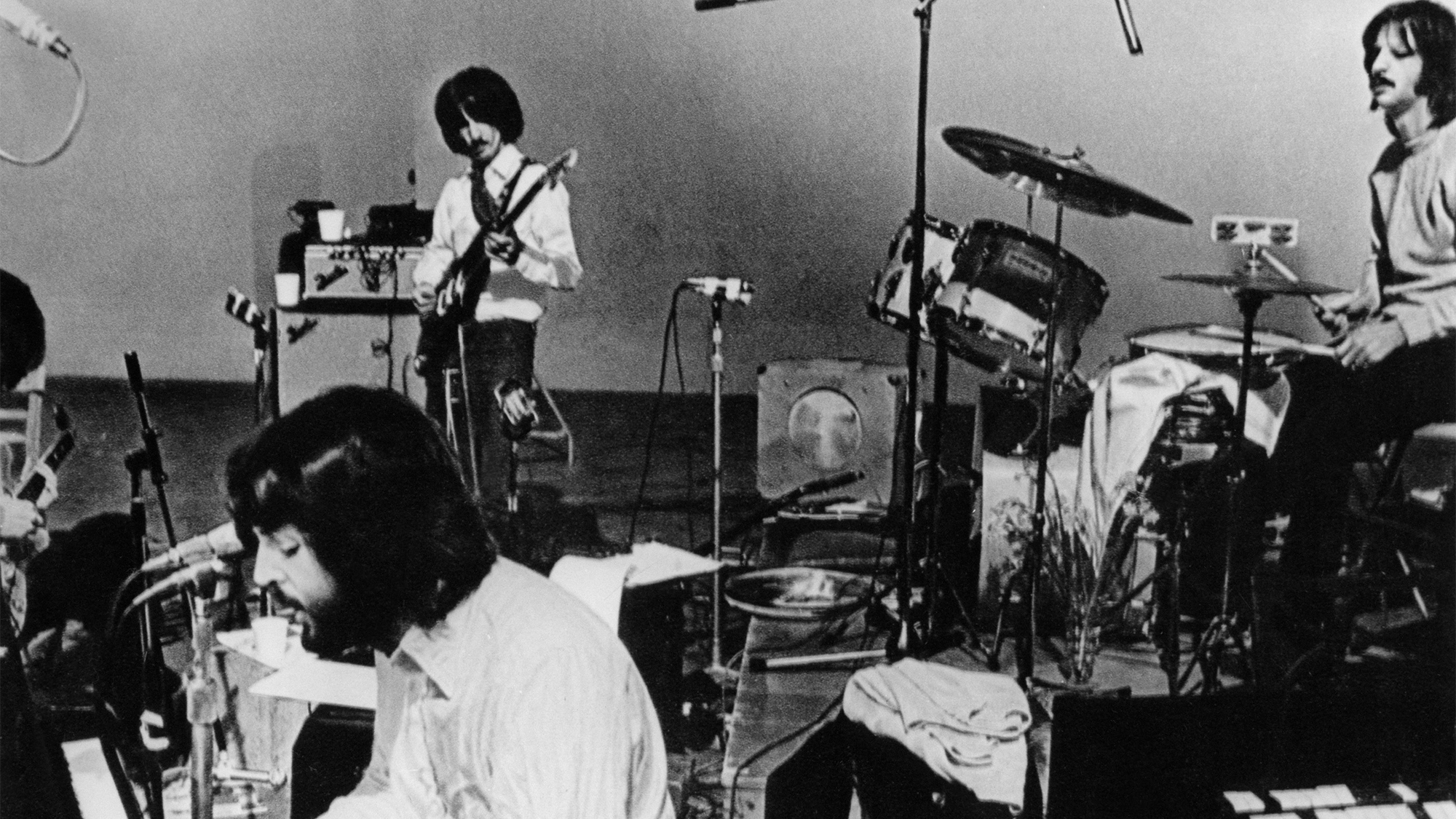“Our first two albums were dismal failures. We had everyone saying, ‘You’d better do it on this one or there’s the door!’ ” Scott Gorham on Thin Lizzy’s ‘Jailbreak’ success, the power of harmony guitars and working with Phil Lynott
After two failed albums, Vertigo Records was ready to drop the band. Their twin-guitar harmonies saved the day

Imagine a world without Thin Lizzy's Jailbreak. You'd never hear "The Boys Are Back in Town" or likely anything else the group would produce after that song became their breakthrough hit in America.
Scott Gorham says it nearly happened. Thin Lizzy’s longest-serving guitarist, Gorham has revealed that Vertigo Records was ready to drop them in 1976 after their first two albums failed to sell.
The guitarist had joined the Irish rockers two years prior alongside guitarist Brian Robertson, bassist/vocalist Phil Lynott and drummer Brian Downey. After penning a deal with Vertigo Records, they released Nightlife (1974) and Fighting (1975) to little fanfare, leaving all parties involved thirsting for success.
“Our first two albums were dismal failures,” Gorham admits to Classic Rock. “For the third, Jailbreak, we literally had everyone saying to us, ‘You’d better do it on this one or there’s the door. The record company, management, and I even think what few fans we had at that point were saying it.
"So we doubled our efforts,” he continues. “We demoed and demoed and demoed and wrote and wrote."
The result was Jailbreak, the album that would become Thin Lizzy's commercial breakthrough. The effort paid off in more ways than one. in addition to producing gems like "The Boys Are Back in Town," "Emerald" and Jailbreak's title track, the group's writing sessions delivered enough material for a second album. "That’s why Jailbreak and Johnny the Fox came out in the same year," Gorham explains. "We wrote probably two and a half albums’ worth of songs.”
Stockpiling songs proved useful after "The Boys are Back in Town" began infesting radio stations everywhere. Gorham knew that meant “we were gonna be on the road constantly,” so having a follow-up in their back pocket helped capitalize on the record's death-defying success.
Get The Pick Newsletter
All the latest guitar news, interviews, lessons, reviews, deals and more, direct to your inbox!
Interestingly, Gorham recently revealed to Guitar Player that the original version of the song didn't have their trademark harmonies. Even after they were added, he was uncertain of its potential as a single. It was only after two American DJs became enamored with the track that the band and label had a change of heart. Then, Gorham says, the song “exploded all over America."
While the quartet's first two records were peppered with lead guitars, Jailbreak marked the first time Gorham and Robertson's twin harmonies became a hallmark of the group's sound. A score of bands, from Iron Maiden to UFO and Judas Priest, would draw influence from their dual-guitar attack. Gorham says it was at that moment he realized they'd stumbled upon something special.
“There was a review of Jailbreak in which the guy said something about ‘that classic Thin Lizzy sound of the twin guitars.’ I said to Robbo, ‘Hey, man, can you believe it — we got a sound!’

“That’s why you saw it in a lot of the Thin Lizzy songs, the twin-harmony sound,” he adds. “I would write specifically to put these harmony guitars in certain areas because I knew a lot of it would be like your second hook. You’ve got Phil doing his thing, he’s got his vocal hook. Now let’s go for the harmony-guitar second hook.”
After Johnny the Fox, Gorham wrote a further five albums with the band before Lynott's death in 1983. Their twin harmonies would remain a crucial calling card across those records as the band carved out an even deeper niche.
“I heard 'Waiting for an Alibi' on the radio the other day and I thought, God, that sounds great!" Gorham says. "It didn’t sound like anything we’d been listening to on the radio for the last hour and a half. I was kind of proud of ourselves for sticking to our guns. This is what we do. This is the way it’s gonna be played. This is the way we like it.”
Gorham’s guitar partners would come and go — Gary Moore replaced Robertson in 1980; he was succeeded by Snowy White and John Sykes — but it was his relationship with Lynott that proved the band’s bedrock.
“We were really comfortable with each other,” he says. “We had the same sense of humor. We pretty much liked the same of everything. It was always Phil and I after a show. He and I going to the club. He and I going to the bar.
“I think it was maybe kind of to the detriment of some of the other guys in the band, where they felt they were maybe being excluded a bit. I didn’t think so at the time.
“We would sit in his living room at his house in Kew with our acoustic guitars, hammering out these chords and song lines. We were egging each other on to write these songs, then present them to the rest of the band,.”
A freelance writer with a penchant for music that gets weird, Phil is a regular contributor to Prog, Guitar World, and Total Guitar magazines and is especially keen on shining a light on unknown artists. Outside of the journalism realm, you can find him writing angular riffs in progressive metal band, Prognosis, in which he slings an 8-string Strandberg Boden Original, churning that low string through a variety of tunings. He's also a published author and is currently penning his debut novel which chucks fantasy, mythology and humanity into a great big melting pot.

“I feel like a fraud. Because people don't know — but they're gonna find out one day.” Judas Priest’s Richie Faulkner opens up about struggling to play guitar since his emergency heart surgery

"It's one of the coolest guitars that I own. And look — it’s fretless!" Dweezil Zappa revels in the quirks and sonic benefits of his one-of-a-kind Gibson "Roxy" SG










